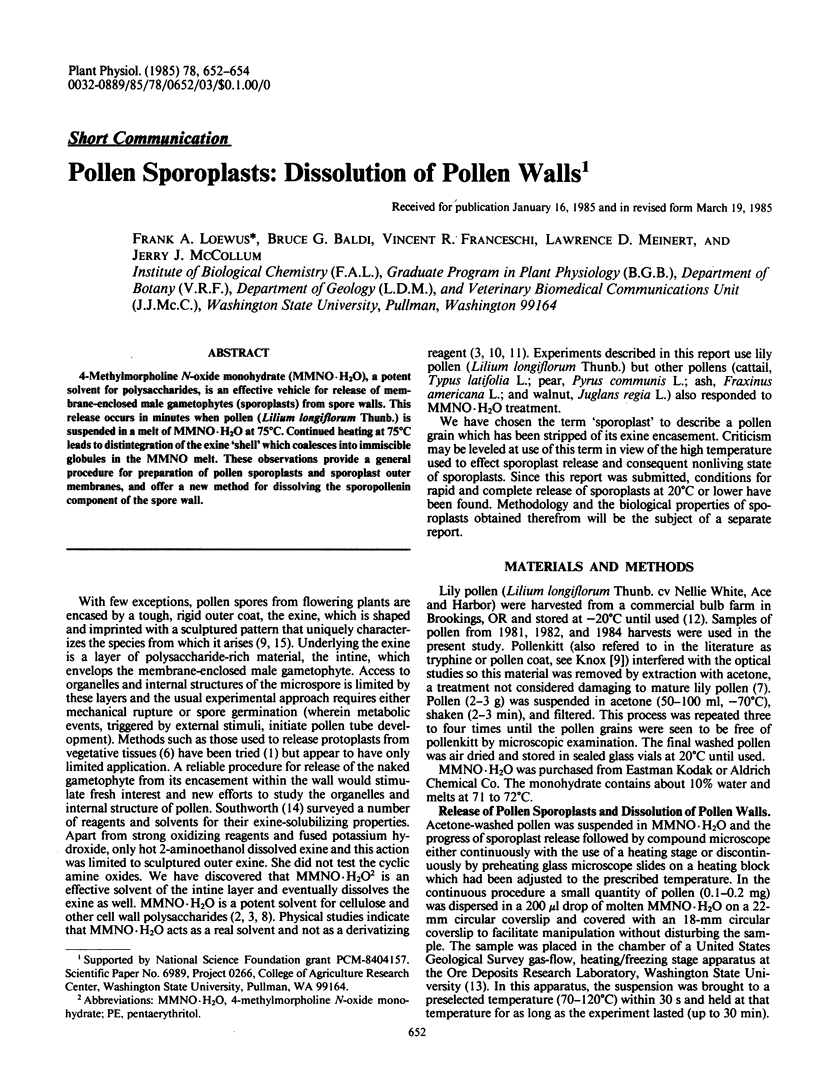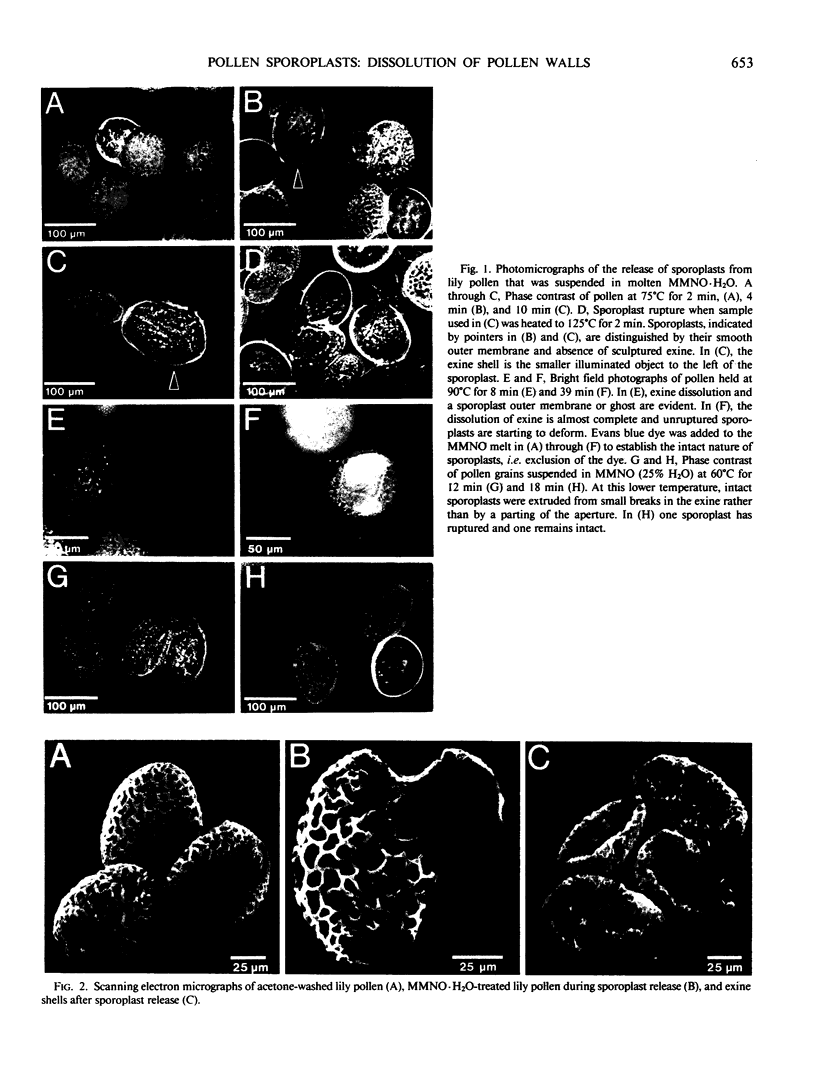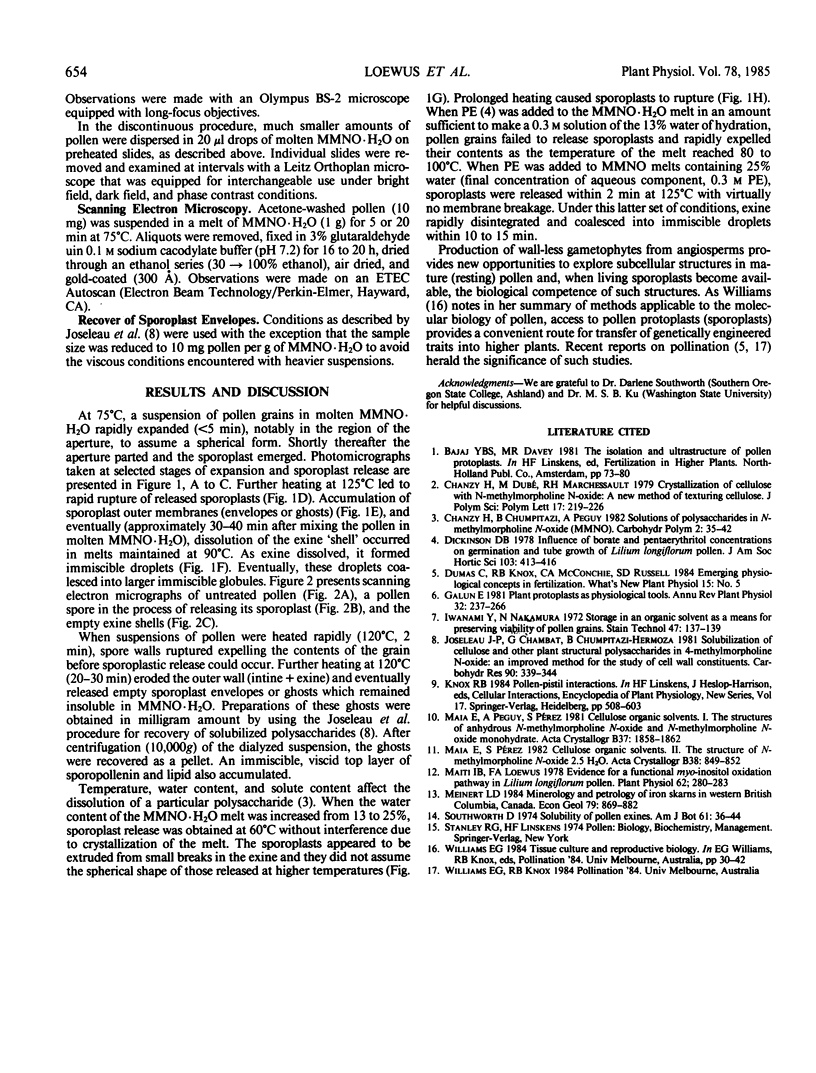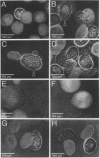Frank A Loewus
Frank A Loewus
1Institute of Biological Chemistry, Washington State University, Pullman, Washington 99164
2Graduate Program in Plant Physiology, Washington State University, Pullman, Washington 99164
3Department of Botany, Washington State University, Pullman, Washington 99164
4Department of Geology, Washington State University, Pullman, Washington 99164
5Veterinary Biomedical Communications Unit, Washington State University, Pullman, Washington 99164
1,2,3,4,5,
Bruce G Baldi
Bruce G Baldi
1Institute of Biological Chemistry, Washington State University, Pullman, Washington 99164
2Graduate Program in Plant Physiology, Washington State University, Pullman, Washington 99164
3Department of Botany, Washington State University, Pullman, Washington 99164
4Department of Geology, Washington State University, Pullman, Washington 99164
5Veterinary Biomedical Communications Unit, Washington State University, Pullman, Washington 99164
1,2,3,4,5,
Vincent R Franceschi
Vincent R Franceschi
1Institute of Biological Chemistry, Washington State University, Pullman, Washington 99164
2Graduate Program in Plant Physiology, Washington State University, Pullman, Washington 99164
3Department of Botany, Washington State University, Pullman, Washington 99164
4Department of Geology, Washington State University, Pullman, Washington 99164
5Veterinary Biomedical Communications Unit, Washington State University, Pullman, Washington 99164
1,2,3,4,5,
Lawrence D Meinert
Lawrence D Meinert
1Institute of Biological Chemistry, Washington State University, Pullman, Washington 99164
2Graduate Program in Plant Physiology, Washington State University, Pullman, Washington 99164
3Department of Botany, Washington State University, Pullman, Washington 99164
4Department of Geology, Washington State University, Pullman, Washington 99164
5Veterinary Biomedical Communications Unit, Washington State University, Pullman, Washington 99164
1,2,3,4,5,
Jerry J McCollum
Jerry J McCollum
1Institute of Biological Chemistry, Washington State University, Pullman, Washington 99164
2Graduate Program in Plant Physiology, Washington State University, Pullman, Washington 99164
3Department of Botany, Washington State University, Pullman, Washington 99164
4Department of Geology, Washington State University, Pullman, Washington 99164
5Veterinary Biomedical Communications Unit, Washington State University, Pullman, Washington 99164
1,2,3,4,5
1Institute of Biological Chemistry, Washington State University, Pullman, Washington 99164
2Graduate Program in Plant Physiology, Washington State University, Pullman, Washington 99164
3Department of Botany, Washington State University, Pullman, Washington 99164
4Department of Geology, Washington State University, Pullman, Washington 99164
5Veterinary Biomedical Communications Unit, Washington State University, Pullman, Washington 99164
1Supported by National Science Foundation grant PCM-8404157. Scientific Paper No. 6989, Project 0266, College of Agriculture Research Center, Washington State University, Pullman, WA 99164.







